HourWise Growth Up 280%

Imagine having your very own in-house Business Idea Incubator. A place where new ideas are organically hatched and resources are on hand to quickly cultivate and test ideas before they’re launched on a national scale.
For a small or mid-sized business, it sounds like heaven. A CEO’s dream. And it’s exactly the enviable position in which HourWise Co-founder Ethan Wirt finds himself.
HourWise was a result of the experience Wirt gained with his first company, 89-Paint. It was there he learned firsthand what it takes to run a contracting business, including the back-office challenges of managing contractors. Now, thanks to 89-Paint, his new business is ripe for penetrating an estimated $1 trillion marketplace.
We caught up with Wirt just days after he moved into his new, larger space in Richmond near Legend Brewery. He was so new to the space that his internet connection wasn’t up and running, and his team was still in transition.
89-PAINT GIVES BIRTH TO HOURWISE
“When I started 89-Paint in 2007, I set out to professionalize a market that’s not always known to be that professional by using unique processes and new technology to scale a better way of getting your projects painted and for the contractors who do it,” says Wirt. “And through that experience, HourWise was born.”
“We knew from what we learned in building that company that we could extract really cool tools and software that was applicable to any contracting company around the country,” Wirt adds “Even today, 89-Paint continues to be a lab for us, where we can test out ideas and test our software and our processes before we take them out to the rest of the world.”
How would Wirt describe HourWise? “Our technology facilitates a process and gives our clients access to a fractional person to help triage every opportunity they have in their business, through life cycle to cash,” he explains. “So if you can imagine, the average paint contractor loves painting, and he’s really good at it and running his crews, but he doesn’t know how to do all the other ‘stuff’ it takes to run his business. HourWise does all the other ‘stuff.’”
HourWise’s services include scheduling, providing quotes, managing invoices and customer follow-ups, and more. Think outsourced office assistance and business partner. The executive leadership team includes co-founders Ethan Wirt and Jon Hill, as well as COO Jason Bello.
Hourwise User Growth up 280%
HourWise was launched in 2012 and began to see rapid growth in 2014, after acceptance into the Lighthouse Labs Accelerator Program. Since then, the company has raised over $750K in seed capital from various strategic and supportive fans within the program.
In the final quarter of 2015, HourWise reported a 280 percent uptick in user growth, and today the company is hiring and finds itself in partnership discussions with big box home improvement stores.
“We’re at 25 employees and growing,” says Wirt. “We’ve been taking on 10 new clients a week and managing 20,000 tasks or so a month for our clients to make their lives easier.”
Wirt estimates there are roughly 1.7 million potential customers for his service, equating to roughly a $1 trillion marketplace. His goal is to reach 100,000 users by the end of 2020.
Such rapid growth often brings pain. Helping him through it, says Wirt, is VACEOs Roundtable #3. “It was really valuable for me to find a group of men and women who knew exactly what I was dealing with,” he explains. “The Council is such a great place to find your clan.” What else does he say about VACEOs? Watch the video.
Getting Personal with Mike Matthews, VACEOs Chair
Mike Matthews’ office, like the man himself, exudes a certain level of equanimity. Save for the few international embassy mugs he’s collected from Hankins & Anderson business trips, his ample desk, set in a sleek, contemporary setting, is clutter free. Wonderfully warm light emanates from a full wall of windows.
To know Mike on paper is to know that he has worked for Hankins & Anderson (H&A) nearly all his professional life, growing the $4 million company to $40 million after taking the helm 20 years ago. But to discover the person is to find a humble teacher and individual who is passionate about his team and his desire for continuous improvement.
He’s a doer and community builder. A free spirit. A family man. And even on the golf course, his perspective rings true to his good nature. We recently sat down with the current VACEOs Chair, and here’s what we learned.
Q: You have an engineering background, and you’re the CEO of a highly successful international architecture and engineering firm. Some folks might be surprised to know you’re a bit of a free spirit. I understand you took an interesting trip after you graduated high school.
“I took to the open road with a friend and lived in the back of a truck after high school. I wasn’t ready to go to college. I was a low-to-medium-level student, and I wasn’t ready to go back and hit the books in college. We spent 10 months traveling around the country. I saw 30 states, and I worked at a gas station in Miami, a ski resort in Vermont, and an oil field in Texas. When I came back, I was a lot more ready to be a student … not that I was a stellar student in college! But I was ready to do it and take it on.”
Q: You’re currently the president and CEO of Hankins & Anderson and you’ve been with them for nearly 28 years. Briefly describe your journey to the helm.
“When I was in college, I went to my high school drafting instructor and asked him where I could find a good summer job. He recommended Hankins & Anderson. I worked as a draftsman for the company that summer and the next. When I got out of school, I worked for another firm for four and a half years that was a spinoff of H&A. I also did a stint as a manufacturing sales rep. That position didn’t suit me well, so when I got a call from H&A to come back as a staff engineer, I took it.
I worked my way up, eventually being promoted to VP in charge of our Fairfax, Virginia, office. Only eight months into that position, I was asked to be a part of an ownership and leadership transition team. The brilliant consulting firm in charge of the transition recommended me for the job. I say ‘brilliant’ because they recommended me!” (He says very jokingly.)
Q: What management qualities does a leader need to possess to run a large and highly successful company like H&A?
“You’re going to hate me, but it’s all cliché stuff. It’s about having a vision and having everyone able to rally around that vision. It’s also about being able to inspire people and being able to communicate effectively. It’s important to be transparent.
For example, about every two weeks, we have a CEO breakfast here where we randomly ask 15 to 20 employees to attend. Everyone puts a question in an envelope for me. Some choose to stay anonymous, and that’s OK. I answer each one at the breakfast. It helps to beat the rumor mill, but more importantly, it keeps us all on the same page. Also, I’m extremely proud of the leadership team I’ve been able to bring here. They all work together and are always challenging each other.”
Q: One of your core values at H&A is a commitment to continuous learning and self-improvement. Is that one reason you decided to become an adjunct instructor at the University of Richmond?
“What’s the old adage? ‘Learn a subject, take a class. Master a subject, teach a class.’? I really enjoy teaching and interacting with the students. I’ve guest-lectured before for many years, but this class gives me an opportunity to fill a void I saw in the business school’s curriculum, and that was teaching students about professional services management – because running an architecture or law firm is very different from other types of business experiences they teach in school.
For example, an architecture firm’s key performance metrics or cost of goods sold is very different from a manufacturing company’s. How you market a professional service is very different, too. I don’t have a widget I can show you and tell you about all its features and benefits; I’ve got to sell you on trusting me as a person. Operations is very different. I’m not managing a production line that’s producing the same widget at so many per hour. Every single thing I do as a lawyer or accountant is different, so I have to approach estimating fees for my services differently.”
Q: You’ve been playing golf for years. What kind of lessons, if any, have you taken from the game?
“My approach to golf is that I don’t expect to be good at it because I don’t work at it, so there’s no pressure! The decisions I make here matter. If I miss a putt, it doesn’t really matter. Golf is a social activity for me. My CEO Forum just went to Daytona and played for our retreat. We had a blast!”
Q: You’re family man, a teacher, a highly successful businessman and the Chair of the VACEOs. How do you stay focused and productive?
A: “I have a routine every morning. I get up early in the morning, get a cup of coffee, go to the nice office I have set up at my home, sit in my really comfortable leather club chair, turn on some soulful piano music and read for an hour. It usually is a business book, but sometimes a fun book – like a grammar book. Yes, I’m a grammar wonk! Sometimes I put a fire on. I really enjoy this time I set aside for myself. Other than that, I take the day as it comes. I’m not a real planner. My staff laughs at me because sometimes I appear to wait until the last minute to do things.”
GroundForce IT Shines During UCI Road World Championships
Well done, Richmond! All the world was watching us during the 2015 UCI Road World Championships, and you represented the region well. It takes a tremendous amount of planning, coordination, sweat and tears to pull off an event estimated to bring in half a million spectators on site and approximately 300 million pairs of eyes via television. But in many ways, for GroundForce IT, the “Official Technology Partner of the UCI Road World Cycling Championships,” the pressure was just part of another day at the office.
REALLY? We were curious. So we caught up with CEO Ethan Seltzer during and after the event to hear his perspective as a sponsor, IT support specialist and cycling fanatic. We wondered, did he have any reservations about putting his business out there in such a big way? Did he have any “OMG” kind of moments? Any regrets? Here’s what he had to say.
Q: Describe the type of work you did for the 2015 UCI Road World Championships.
A: Our job at the race was similar to the type of work we do every day – setting up firewalls, phone systems and wireless networks. In this case, our work supported the broadcasters, commentators and VIPs in the UCI tent. We were on site from September 20 through September 27 to provide IT assistance. We spent approximately 120 man-hours on the project.

Q: As a sponsor of the event, your logo was prominently on display to essentially the world. Did you ever think, “Do we really want to put ourselves out there for such a high-profile opportunity?”
A: Because I’m a cycling fanatic myself, GroundForce IT has been active in sponsoring and physically supporting active events for almost eight years. This, of course, was at a whole different level – think sponsoring a high school match versus an NBA game. Was I a bit nervous? The short answer is “a little bit.” But only after the race started and there was an urgent request to provide additional IT services that were out of the initial scope of the work we were asked to do — which, if there was a glitch, would affect cameras on the course and what the world saw. That was a little intense. No glitches were experienced. In the end, we wanted to bring our “A” game, and we did.
Q: What was one of your favorite or one of the funniest moments you witnessed that the cameras didn’t catch?
A: During the U23 men’s race, several cyclists were using the restroom adjacent to the start/finish line. One cyclist climbed the barricades to get back on his bike with just 30 seconds to go before the race was set to start – to get back to his bike, super-relaxed and cool. Several of us spectating commented on how we’d be a bundle of nerves 30 seconds before a World Championship race!
Q: Did you meet any of the cyclists? Did you have any “OMG” kind of moments?
A: I had the opportunity to meet a few former and current pro cyclists. Bob Roll – “Bobke” – was a very nice guy. He wears EXCEPTIONALLY tight/skinny jeans. Not sure how he fits into them!
Q: If you had the chance to train with a member of the USA Men’s team, who would you choose, and why?
A: That would have to be Ben King. He was born in Richmond, Virginia, and grew up in Charlottesville. He was in the breakaway group of the Men’s Elite race for much of the day on Sunday (September 27) and did both the USA and Virginia proud. I did speak to him very briefly during the week and asked if he’d join the Goochland Mountain Bike Team for a practice. He was exceptionally nice and said if his schedule permitted, he’d be happy to.
Q: Any regrets or “Wish I would’ve…” moments?
A: We are not great promoters of ourselves, so, looking back, we could have done a better job of showcasing our capabilities in the VIP tent and elsewhere. My advice to anyone who’s thinking about becoming involved in an event of this magnitude is to get out of the weeds of the day-to-day and make a solid plan. Think big. Consider hiring a marketing or PR firm to help you if you don’t have the resources in house to “own” the project. Lastly, have a real action plan in place to capitalize on all the various publicity opportunities that happen before, during and after the event.
In Focus: Taradel, Seven Time (and counting) Inc 5000 Company
Gone are the days of selling print to a narrow audience from your bedroom office. Your value proposition and market are cast over a much wider space now. Your new digs, nearly 5,000 square feet.
Your current endeavor has taken you from zero employees to 22 in a quick 10 years. Many measure your success by how many times your business has made the Inc. 5000 Fastest-Growing Companies list (seven and counting).
When asked what one piece of advice you’d give a budding entrepreneur, you say, “Be decisive. You can’t move forward without data points. That was a valuable lesson I learned from a CEO a long time ago. A lot of folks hesitate over whether to make an investment or whether they should make a move. Wrong or right, you’ve got to start somewhere so you have a starting data point. You can’t manage indecisiveness.”
Behold! You’ve have entered the world of Jim Fitzgerald, CEO of Taradel. Three-time successful entrepreneur. Print-and-deliver mega-star. VACEOs member.
TARADEL: ON THE WINGS OF SMALL BUSINESS
Jim Fitzgerald started what would later become Taradel in 2003. From a small desk in a spare bedroom, he crafted a simple plan to make full use of his extensive print and design knowledge. His goal was to offer an inexpensive, high-quality, fast-print advertising insert solution for the newspaper industry. When his idea came to fruition, his newspaper clients were wild about the ROI, and small business advertisers were wild about the newspapers’ reach and the customized direct mail piece that was produced. It was a win-win for all.
It didn’t take long before Fitzgerald’s business model evolved. He explains, “I got to the point where I couldn’t scale the business, so I found a web developer and built a website where the customers could place their orders themselves. It wasn’t long after that I realized we had two really good assets: great pricing on a product with wide demand and a great online web-to-print engine. We dressed it up and started offering those print products to everyone. That was in 2004.”
Today, Fitzgerald describes Taradel as a place where small business owners can create a targeted direct mail campaign in under 10 minutes. Dig deeper and we quickly learn his value proposition is much more extensive. Turns out Taradel has an eye for data and digital, too. The company is heavy into things like data mining and heat mapping databases, building custom integrated websites and campaigns that span marketing disciplines.
Fitzgerald’s target market is still small businesses owners, but Taradel now works with national franchisors, as well. The company has also recently expanded into Canada.
SEVEN-TIME REPEATER. WHAT’S THE SECRET?
To date, Taradel has made the Inc. 5000 Fasting-Growing Companies list seven times, coming in at #2480 for 2014. Fitzgerald absolutely expects to hear from the Inc. team again this August. Very few businesses can claim this remarkable status. What’s his secret?
“Hire great people,” says Fitzgerald. “It sounds silly, but I talk to a lot of colleagues who have problems with their staff. By ‘great,’ I mean – and I’m stealing from Cameron Herold, who I heard speak at the last VACEOs Retreat – I don’t ever motivate people. I hire motivated people. When we bring someone in, they will meet at least six or seven team members. When the team gets together to talk about that candidate, if it’s not a collective ‘hell, yeah,’ then it’s a no. It’s that simple. Whenever we violate that rule, we regret it.”
Another key? “Build a world-class inbound marketing platform,” he says. “We get a hundred leads a day. We never make a cold call. We use a variety of methods for inbound, including SEO, search engine marketing, display advertising, content generation and automated marketing campaigns. Once people look for the products we sell, there’s a very good chance they will land on our website.”
A sense of urgency also fuels Taradel’s success. Sure, the company is pretty much guaranteed to make the next Inc. 5000 list, but there isn’t an unlimited amount a capital available, says Fitzgerald. He says, jokingly, “We eat what we kill. Every week, we have to hit a number, and that creates a sense of urgency in the environment. I also think that’s an important reason for our growth.”
ONWARD AND UPWARD
Taradel recently secured a large Canadian account, and Fitzgerald reports that he’s hopeful new opportunities in Australia and England will be finalized soon. In the meantime, he’s firmly focused on his current customer base.
“We’ve recently customized a website for a client that integrates our email and direct mail databases and marketing initiatives for them,” says Fitzgerald. “That’s really exciting! Our website will soon have an integrated marketing road map for business owners. From our site, you’ll be able to generate integrated direct mail, email, Facebook and display advertising campaigns to a specific target audience in about 10 minutes.”
Is Fitzgerald worried that direct mail and print – his original bread and butter – might be going away? It doesn’t appear so.
“Here’s why I love print. If I go to a meeting with CEOs and ask for those who understand how direct mail works, most will raise their hands. If I ask how re-marketing or pay-per-click advertising works, much fewer hands go up. My point is everyone understands direct mail. The reality from our perspective is that print is out-producing digital media in measurable terms. We see direct mail as an important part of an integrated marketing campaign and an important bridge to the digital side of marketing, which we understand very well. At the end of the day, we want to make it easy for any small business to create integrated campaigns.”
Imagine you had a network of resources to help you navigate through the complex challenges you face each day as a leader. A group of like-minded people to help guide you through your questions about finances, employee concerns or marketing issues. You do in the Virginia Council of CEOs.
No Matter Our Mission, We’re All Like-Minded Leaders
Virginia Council of CEOs members represent a wide range of industries and experiences. Whether the organizations they lead are driven by profit, or mission, or both, the CEO’s job is much the same. No matter their mission, whether it be to sell lots of products or support matters of the heart, they all agree on one point: it’s lonely at the top.
“I can’t turn to my employees with a business problem, or to my husband, because he’s in a completely different profession,” says Louise Bagwell-Robinson. She’s the founder and CEO of Millwood School – a 26-year-old nonprofit she started to fill an education void in her local community.
Bagwell-Robinson became a VACEOs member in 2011 after attending a Quarterly Luncheon as a guest. She admits she was a little hesitant to join the organization at first.
“At first, I had some trepidation about joining, because I didn’t know if I had anything to share, she explains. “I didn’t think I knew a lot about business, and I didn’t think I’d have much to offer, but it turns out I really do know a lot, and now I know even more because I’m running a very large organization.”
Her experience teaching at various schools, including the University of Pittsburgh, fueled her desire to start a non-parochial private school for her kindergartner and, later, for her toddler. As an educator and a mom, she knew exactly what she wanted.
“As a mom who happened to be an educator with lots of experience from coast to coast, I wanted three things,” says Bagwell-Robinson. “One, I wanted a place that would challenge the intellect of every student in the school; secondly, I wanted a place that was safe, both literally and figuratively – meaning, I wanted kids to be free to take an intellectual risk, especially girls in math and science; and lastly – and this was very important to me as a mom – I wanted my girls to be in a place where there was an adult who would know if their heart was hurting.”
Millwood School began in 1989 with 20 students, three construction trailers and a 2.5-acre plot of land in the Brandermill subdivision of Midlothian, Virginia. Four years later, the school moved to a different location, then quickly outgrew it. Fast-forward to 2015, as Millwood celebrates its 27th anniversary. The school currently serves 220 students, employs 45 people and sits on 79 acres. The buildings on the property are valued at approximately $7 million, Bagwell-Robinson manages an annual budget of around $3 million, and in 2014 the Richmond Magazine named Millwood Best in Education.
NONPROFIT OR NOT, WE’RE ALL LIKE-MINDED LEADERS
For Bagwell-Robinson, the most valuable benefit of membership in the VA Council of CEOs is the shared experience. “All businesses, whether for profit or not, deal with pretty much the same issues, like budgets, HR concerns, marketing, benefits, taxes,” she says. “VACEOs is so valuable because it’s almost impossible to know all the things there are to know about starting and operating a business. The Roundtable format is a safe environment where you can share your experiences and learn from other people’s mistakes or successes. It’s an extremely helpful process, and it has helped me through business, personal, and even family issues.”
Jennifer Boyden, CEO of Heart Havens, agrees. “There are many things that happen in the role of a CEO. It’s comforting to be around like-minded people and to be able to grow through that experience.”
Heart Havens offers support services and builds homes and communities for adults with intellectual disabilities. The nonprofit began in 1993 as the result of a parent of a child with intellectual disabilities asking her pastor, “Where will my child live when I am gone?” and has blossomed into a non-denominational 501(c)(3) nonprofit that manages 11 homes across the state. The organization employs approximately 110 today.
“We empower adults with intellectual and developmental disabilities to live and thrive in their community by providing a safe, nurturing environment at home and through the support our staff provides,” says Boyden. “Our ultimate goal is to empower the people we support. We want to give them the life they want to have, to help them develop the skills they need to in order to be successful.”
Although relatively new to VACEOs, Boyden has already benefited from the experience. “I have found that my Roundtable has given me the ability to talk about a challenging decision I’ve had to make,” she explains. “I was able to hear other experiences and process my challenge, so that by the end, I was well on the path to developing a plan for resolution. In broader terms, their support has given me the confidence to be a better leader. This means my staff, in turn, gains strength, as it all comes back to the leader. By fortifying those walls, you build strength in the organization.”
MISSION ACCOMPLISHED, BUT STILL MORE TO DO
What’s next for these two dynamic CEOs? Bagwell-Robinson reports that her goals are to build out all of the 79 acres her school currently occupies and max out her Junior Kindergarten through 12th-grade enrollment to 600 students.
“It’s an exciting time for Millwood School,” she says. “We just graduated our third and largest 12th-grade class. Most of the students are going to prestigious Virginia colleges. One student will be attending Stanford. In the near future, we will launch an entrepreneurship program, which I’m really excited about. My goal is to polish this product, if you will, day after day, to make sure it is the best it can be. I’m very proud of what an army of people has done here, and I want to make sure it continues on forever. I feel I was brought to Virginia to create Millwood School. I absolutely love coming to work. It feels so good to do what I’m meant to be doing.”
Jennifer Boyden of Heart Havens is excited about her plans to integrate technology into the lives of the organization’s residents. Her plans include continued expansion, which she feels she’s ready to tackle with confidence.
“Our goal is to fundraise and then purchase and rehab or build an apartment complex in Charlottesville,” says Boyden. “The facility will be very integrated into the community, and it will have technology in place to help folks live more independently. This new venture will truly allow people to experience their own abilities and will do the same for the people around them. These new endeavors are nerve-wracking, and I’m sure my Roundtable will be there to help me maintain my footing and confidence while we head in this new direction.”
Imagine if you had a network of resources to help you navigate through the complex challenges you face each day as a leader. A group of like-minded people to help guide you through your questions about finances, employee concerns or marketing issues. You do in the Virginia Council of CEOs. Learn more here.

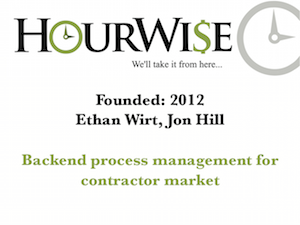

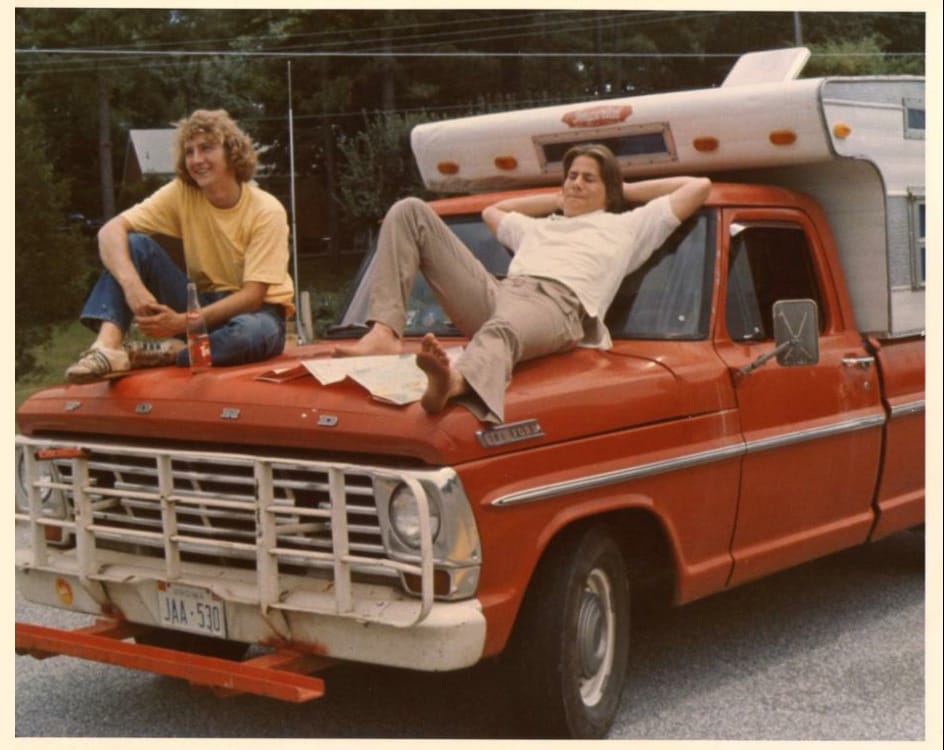
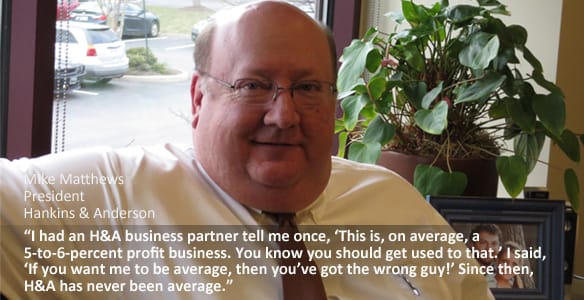

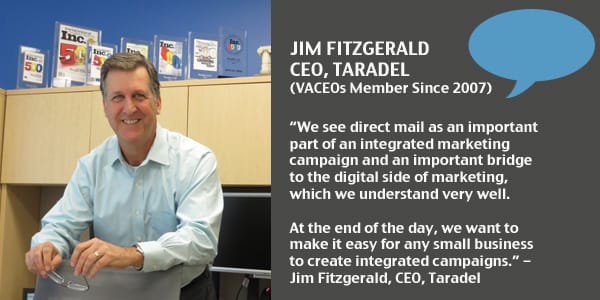
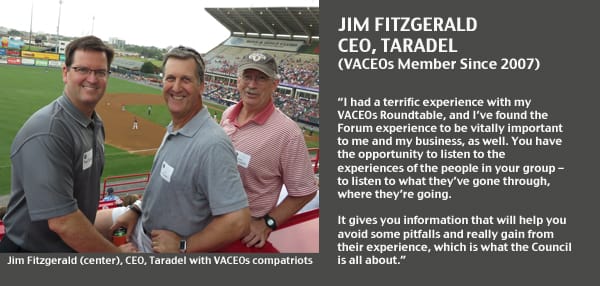
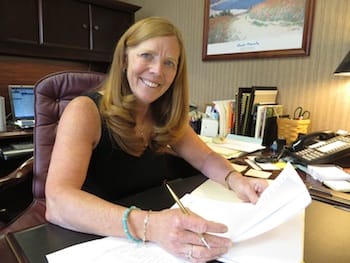

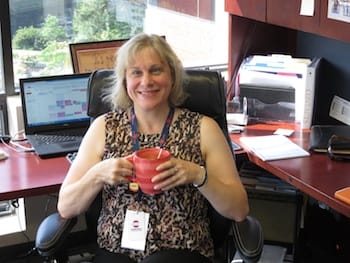
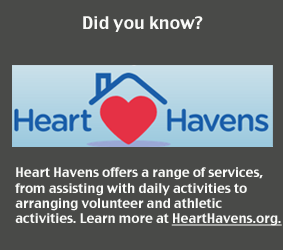
Recent Comments